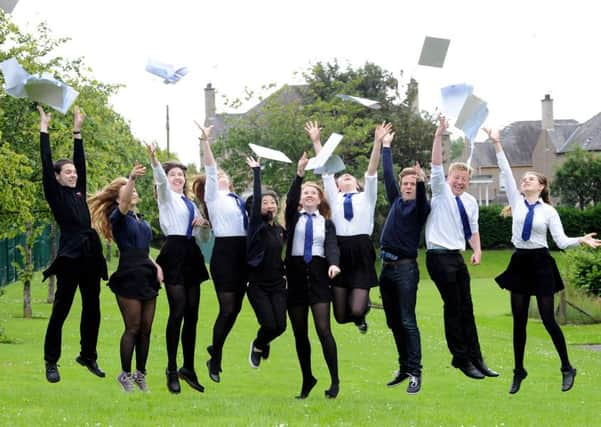Pass mark for Higher maths lowered to 34 per cent


Data released by the Scottish Qualifications Authority (SQA) revealed the percentage required to achieve a C grade at the new Higher maths was almost 10 percentage points lower than the 43 per cent required to pass the old version this year.
The disparity emerged when the SQA published the grade boundaries for the exams sat by Scottish pupils this year.
Advertisement
Hide AdAdvertisement
Hide AdThe challenging nature of the new maths paper led to thousands of pupils signing an online petition to complain after they sat the exam.
Pupils and teachers said it was too difficult, was structured in a different way from the old exam and bore little resemblance to the prelim that they sat in order to prepare for it.
Almost 143,000 students received their exam results yesterday, some sitting the new Highers for the first year and National 4 and 5 qualifications for the second year.
The new qualifications were brought in as part of the Curriculum for Excellence reforms. Pupils were also able to sit existing Access, Intermediates and Highers which were “dual-run” for 2015 alongside the new qualifications.
A total of 10,854 pupils sat the existing Higher maths while 10,220 sat the new Higher maths.
The attainment rates were 73.1 per cent and 70.8 per cent respectively, similar to that of previous years. But it was the extent to which the pass mark had to be lowered that concerned politicians yesterday.
The lowering of the pass mark was reflected in the other grades. In the new exam, pupils would receive a B if they achieved more than 46.9 per cent, compared with 55.3 per cent in the old test.
Similarly an A grade was given to those who got more than 60 per cent in the new exam, compared with 68 per cent in the old.
Advertisement
Hide AdAdvertisement
Hide AdActing Labour leader and education spokesman Iain Gray said: “The pupils who raised concerns about the difficulty of the new Higher maths exam have been vindicated. It’s true that pass marks are adjusted each year, but it’s extraordinary to see this drop to just 33.8 per cent. The Highers are the gold standard of Scottish education and this is a big concern.
“The SNP have spent the last few days crowing that there was no problem with the maths exam only for their own exams authority to say today that it was too hard. We need a full review by the SNP government into the problems with the new Higher maths exam.”
Conservative young people spokeswoman Liz Smith said: “People would understand if modest modifications had been made to pass rates to reflect realistic changes in exams. But this reduction is drastic, and shows just how badly the SQA got it wrong.
“First these maths pupils had to endure a prelim exam which bore little resemblance to what they were taught, and now it seems this summer’s examination was too difficult by a significant measure.”
The SQA figures showed there were a record 156,000 Higher passes this year, up 5.5 per cent on 2014.
Overall, 107,295 pupils sat the new Highers, with a pass rate of 79.2 per cent. A further 92,555 pupils sat the existing Highers, recording a pass rate of 76.7 per cent, slightly down on 2014’s 77.1 per cent.
Dr Janet Brown, SQA’s chief executive and Scotland’s chief examining officer, said: “If required, grade boundaries are adjusted to take account of any assessments that were easier or more demanding than intended to ensure all candidates received the grades they deserved.”
A Scottish Government spokesman said: “Every year, we look at the qualifications process and results, alongside our partners, to consider what worked well and where any changes might be needed. That work is already under way. We are committed to improving education for children and young people and any issues identified will again be addressed.”